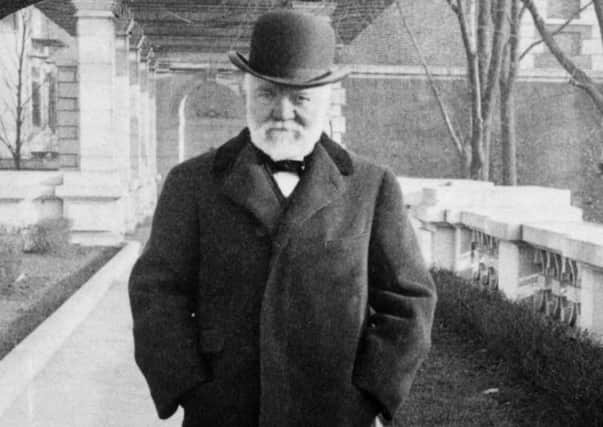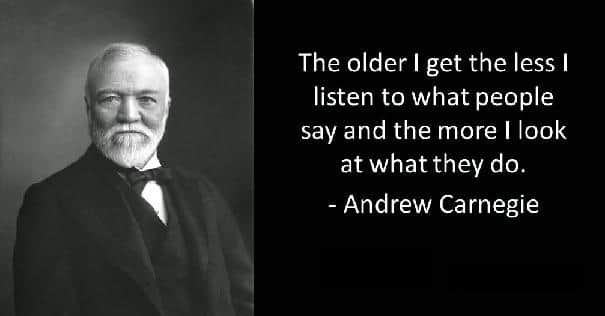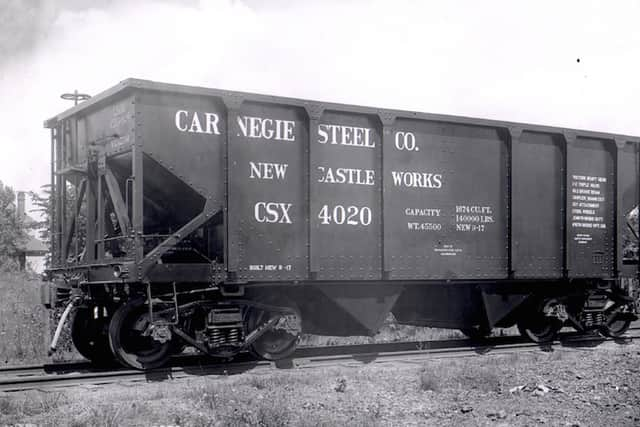Andrew Carnegie, the Scot who personified the American dream


How is it a lowly Scottish immigrant from Dunfermline arose from poverty to become one of the richest men to have ever lived?
Andrew Carnegie was a Scottish-American industrialist who led the American steel industry in the late 1800's. At the height of his wealth, he was four times richer than Bill Gates is today after selling his steel empire to J.P. Morgan for $480million in 1901, worth. A renowned philanthropist, he spent the rest of his life reinvesting in society.
Advertisement
Hide AdAdvertisement
Hide AdIn a way, he personifies the American dream - a Scottish immigrant who fled poverty with his family and ascended into immeasurable wealth after arriving in America.


The industrialist possessed three key traits which can account for his absurd fortune.
Dr Chris Miller, of Glasgow University’s Centre for Business History, believes Carnegie possessed three “special qualities” to .
“People often think Carnegie’s story is that of a man who started working at a young age and found himself on a fast upwards trajectory,” he says, “but this isn’t the case.
“Even in his early 20’s Carnegie was still only earning around $3 a week. The real story is him accumulating his wealth later on in life.”


Carnegie’s first talent was networking - he brought himself to the attention of influential people at the right time in his career, beginning with Thomas A. Scott, who later became Vice President of the Pennsylvania Railroad.
Scott took Carnegie under his wing and alerted him to investment opportunities in railroads.
“He benefitted from good connections and being around at this time, maybe in the way that Henry Ford was for engineering and Mark Zuckerberg was for Computing,” says Dr Miller.
Advertisement
Hide AdAdvertisement
Hide Ad“He was a man of his time who could ride that wave of industrialisation.”


Part two of Carnegie’s brilliance was his ability to take risks and bet it all on the house.
“He famously remortgaged his parents house to ‘bet’ it on railroads and he did that at just the right time.”
The American Civil war highlighted the importance of railroads as the network expanded rapidly through America during the 1850s and 1860s and Carnegie capitalised again and again.
His trifecta was completed by simply being around at the right time.


He had witnessed the potential of steel during the Civil War and purchasing a succession of steel mills signalled a career change from railroads and he continued to invest heavily in expansion.
“Carnegie Steel was around for less than a decade,” explains Dr Miller, “and not the lifelong pursuit of a steel empire as many see it.
“He only got into steel in the 1870’s during a time of rapid expansion and by 1901 he sold the company to J.P. Morgan.”
Advertisement
Hide AdAdvertisement
Hide Ad“Despite that, he’s remembered as the man who owned the business that became US Steel, but it was something he only came to in his 40’s after a career in telegraphs and railroads.
Andrew Carnegie is perhaps best remembered, not as the man who accumulated wealth, but the man who gave his wealth away.
He believed, “No man becomes rich unless he enriches others.”
Between 1901 and 1919, he continued to invest, this time in libraries, education and public amenities.
His foundations built 3,000 libraries around the world - the first of which was built in his beloved home of Dunfermline. A modest Carnegie Hall, twinned with the majestic New York City theatre, was his last gift to his ancestral town.